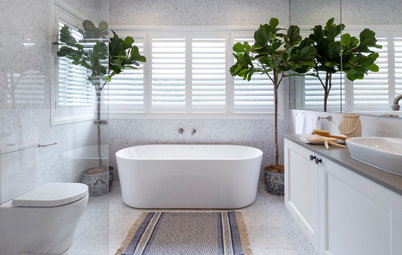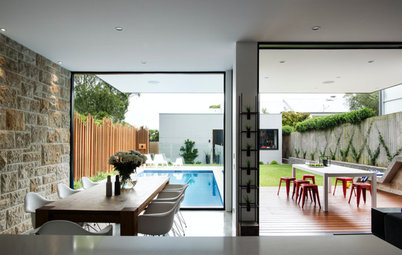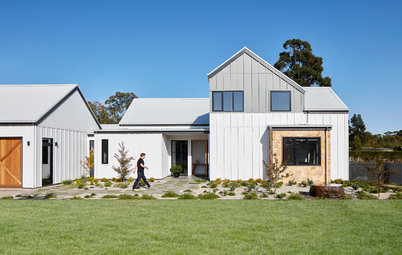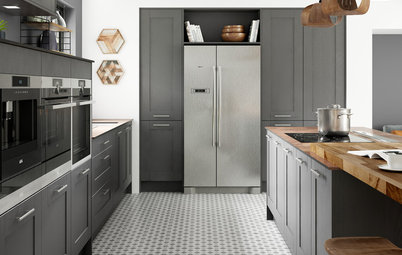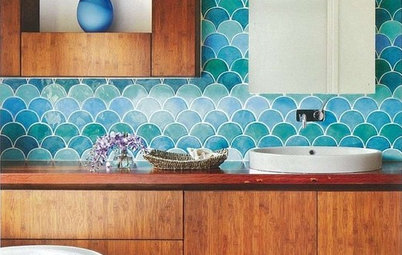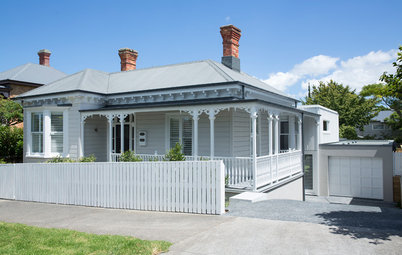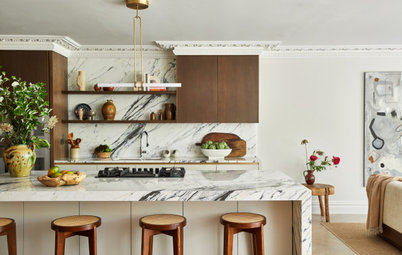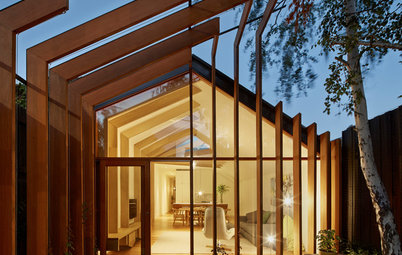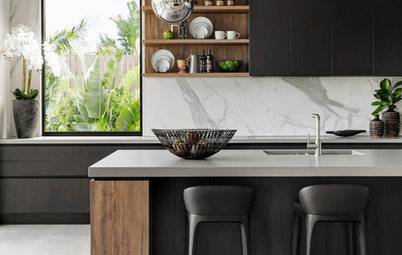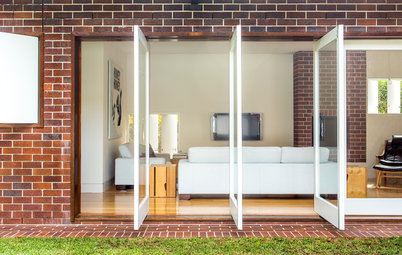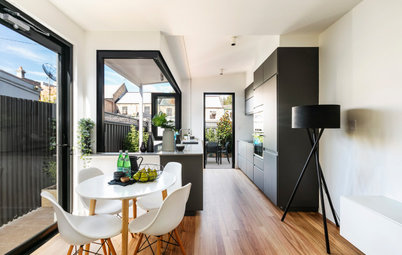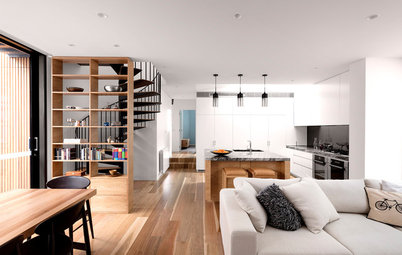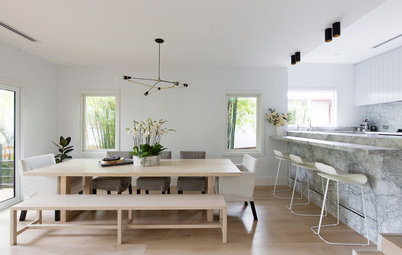Renovating
Room by Room: How Much Do Renovations Really Cost?
Hint: it's usually more than you think. Houzz debunks common myths and reveals the true cost of renovating, room by room
The question of how much it costs to renovate is best answered by another question: how long is a piece of string? They sky’s the limit when it comes to renovating and often, when we’ve added up the total cost, the zeroes behind that dollar sign seem to just keep coming. In the latest 2017 Houzz & Home survey, 34 per cent of Australian respondents said the greatest challenge of renovating was staying on budget. So in the spirit of helping renovators set a reasonable budget in the first place, we ask ‘How much does it actually cost to renovate?’ Let’s find out.
The average cost of renovations in Australia in 2016 was $66,900 according to the most recent Houzz & Home Survey – a 3.5 per cent increase from $64,600 in 2015. Of the 9,924 Australians surveyed, 74 per cent renovated their home to improve its look and feel, while an equal percentage wanted to improve its functionality. For 46 per cent of respondents, increasing their property’s resale value was a top priority.
Room-By-Room Renovation Costs
Kitchens
Kitchens are, according to the survey, both the most commonly renovated room in the house as well as the most expensive. For kitchens over 10 square metres, the average cost came in at a whopping $22,600. In contrast, kitchens measuring less than 10 square metres cost on average $14,600, proving that size does matter.
Kitchens
Kitchens are, according to the survey, both the most commonly renovated room in the house as well as the most expensive. For kitchens over 10 square metres, the average cost came in at a whopping $22,600. In contrast, kitchens measuring less than 10 square metres cost on average $14,600, proving that size does matter.
Bathrooms
Bathrooms were the third most renovated room in the house, following our kitchens and family/living rooms respectively. But in terms of cost, these wet zones scored second place. Bathrooms measuring more than 5 square metres cost on average $13,300 to renovate, while their smaller equivalents set their owners back an average of $10,300.
Browse beautiful bathrooms built on a budget
Bathrooms were the third most renovated room in the house, following our kitchens and family/living rooms respectively. But in terms of cost, these wet zones scored second place. Bathrooms measuring more than 5 square metres cost on average $13,300 to renovate, while their smaller equivalents set their owners back an average of $10,300.
Browse beautiful bathrooms built on a budget
Laundries
Fourth on the list in terms of expense were our laundries. It cost Australians on average $5,700 to renovate larger laundries measuring over 5 square metres, or $2,800 for their smaller counterparts.
So what do these three rooms – kitchens, bathrooms and laundries – all have in common? Plumbing, for one, as well as all the accompanying accoutrements such as tapware and basins, and the necessary waterproofing that comes with wet zones. This is on top of appliances, and the numerous trades you need for joinery and tiling, and on top of plumbers, electricians and other building professionals.
Fourth on the list in terms of expense were our laundries. It cost Australians on average $5,700 to renovate larger laundries measuring over 5 square metres, or $2,800 for their smaller counterparts.
So what do these three rooms – kitchens, bathrooms and laundries – all have in common? Plumbing, for one, as well as all the accompanying accoutrements such as tapware and basins, and the necessary waterproofing that comes with wet zones. This is on top of appliances, and the numerous trades you need for joinery and tiling, and on top of plumbers, electricians and other building professionals.
Family/living rooms and bedrooms
Family/living rooms were the second most renovated spaces after kitchens. But on average, renovating these spaces set people back $6,500 for living areas over 10 square metres or $3,800 for their smaller counterparts. The price of renovating these rooms is significantly less than the cost of making alterations in wet zones other than the laundry, and closer in nature to the price of making changes to our bedrooms, which set people back $2,800 on average.
See the full results of the 2017 Houzz & Home – Australia survey
Family/living rooms were the second most renovated spaces after kitchens. But on average, renovating these spaces set people back $6,500 for living areas over 10 square metres or $3,800 for their smaller counterparts. The price of renovating these rooms is significantly less than the cost of making alterations in wet zones other than the laundry, and closer in nature to the price of making changes to our bedrooms, which set people back $2,800 on average.
See the full results of the 2017 Houzz & Home – Australia survey
How do costs align with our expectations?
Sally Holbrook, founder and director of Northbourne Architecture + Design, finds that people usually underestimate the cost of renovating. “Our clients often come to us with an idea of what they want and need, as well as a preferred budget in mind. But more often than not, we find the client’s preferred budget does not align with their expectations,” she says. “It’s like wanting a Ferrari for the price of a Corolla.”
Sally Holbrook, founder and director of Northbourne Architecture + Design, finds that people usually underestimate the cost of renovating. “Our clients often come to us with an idea of what they want and need, as well as a preferred budget in mind. But more often than not, we find the client’s preferred budget does not align with their expectations,” she says. “It’s like wanting a Ferrari for the price of a Corolla.”
“We encounter this misalignment often, so much so that we developed a specific service to assist people,” says Holbrook. Northbourne Architecture + Design offers clients a technical cost estimation process to ascertain how viable a project actually is, before launching into the expensive design phase.
“Our objective is to help people make informed decisions about their project before they invest too much money,” says Holbrook. “There is nothing more heartbreaking for both client and architect than spending thousands and thousands on designing a house, only to find it is well over your budget and cannot be built.”
“Our objective is to help people make informed decisions about their project before they invest too much money,” says Holbrook. “There is nothing more heartbreaking for both client and architect than spending thousands and thousands on designing a house, only to find it is well over your budget and cannot be built.”
Why are renovation costs chronically underestimated?
Interior designer Georgia Ezra, director of Studio Ezra and Tiles of Ezra, finds the issue of cost misrepresentation as frustrating as any other homeowner.
“Shows like The Block are the most unrealistic things ever,” she reveals. “I’ve been through the spaces and there’s no way they could achieve those outcomes without spending a large and unrealistic sum of money for mainstream Australians. It’s a misrepresentation of what you can do. There are no budgets there, companies often give free products and trades provide free services. It’s frustrating for someone who sees how expensive things really are.”
Take a virtual tour of Georgia Ezra’s home
Interior designer Georgia Ezra, director of Studio Ezra and Tiles of Ezra, finds the issue of cost misrepresentation as frustrating as any other homeowner.
“Shows like The Block are the most unrealistic things ever,” she reveals. “I’ve been through the spaces and there’s no way they could achieve those outcomes without spending a large and unrealistic sum of money for mainstream Australians. It’s a misrepresentation of what you can do. There are no budgets there, companies often give free products and trades provide free services. It’s frustrating for someone who sees how expensive things really are.”
Take a virtual tour of Georgia Ezra’s home
Ezra recently renovated her 1923 home in Melbourne with her husband Richie Morris, who works as a construction manager. The house was in an “unliveable” state when they bought it and the changes they made to create their new abode, pictured here, were extensive. However, Ezra and Morris took advantage of their industry contacts and experience to keep their renovation costs down – a perk that many design and building professionals can capitalise on.
“We achieved everything in around $150,000 to $200,000,” Ezra says. “However, in saying that, it wouldn’t be reflective of what someone else would have paid because we didn’t pay for interior design services, we got a lot of things at trade discounts, I supplied all my new tiles – we really did get things in a more cost-effective manner than a general audience would.”
Renovating versus building anew
A wall moved here, a room widened there, the ceiling heightened throughout… surely renovating is cheaper than demolishing and building from scratch, right? According to Holbrook, this is assumption is usually wrong.
“If you are wondering whether to renovate and extend an existing dwelling or build a brand new house of the same size and level of finish, you would probably assume that to renovate and extend would be significantly cheaper than to build an entirely new house,” says Holbrook. “But when significant changes are required to bring the existing dwelling up to scratch, we find the costs end up being quite similar.”
5 Reasons Renovating Costs More Than Building From Scratch
A wall moved here, a room widened there, the ceiling heightened throughout… surely renovating is cheaper than demolishing and building from scratch, right? According to Holbrook, this is assumption is usually wrong.
“If you are wondering whether to renovate and extend an existing dwelling or build a brand new house of the same size and level of finish, you would probably assume that to renovate and extend would be significantly cheaper than to build an entirely new house,” says Holbrook. “But when significant changes are required to bring the existing dwelling up to scratch, we find the costs end up being quite similar.”
5 Reasons Renovating Costs More Than Building From Scratch
To live on-site or off-site? That is the question
To ease the expression of deep horror on your face when you add up your renovation costs and gulp at the final figure, consider whether living off-site could actually help your hip pocket. “Generally, owners will consider living on-site during construction to save on accommodation, moving and storage costs,” Holbrook explains. “The reality, unfortunately, is quite the opposite. It will invariably cost more to live on-site, and the construction process will also be extended while being very awkward for the occupants.”
Why? Because your builder needs to alter the renovation schedule and process to work around you. On top of this, the time it takes to clean up at the end of each day, turn the hot water back on and basically make a building site habitable is time taken away from the actual build, which slows down the project, and we all know that time is money.
How to Decide Whether to Stay or Go During Your Renovation
To ease the expression of deep horror on your face when you add up your renovation costs and gulp at the final figure, consider whether living off-site could actually help your hip pocket. “Generally, owners will consider living on-site during construction to save on accommodation, moving and storage costs,” Holbrook explains. “The reality, unfortunately, is quite the opposite. It will invariably cost more to live on-site, and the construction process will also be extended while being very awkward for the occupants.”
Why? Because your builder needs to alter the renovation schedule and process to work around you. On top of this, the time it takes to clean up at the end of each day, turn the hot water back on and basically make a building site habitable is time taken away from the actual build, which slows down the project, and we all know that time is money.
How to Decide Whether to Stay or Go During Your Renovation
Time is money
Ezra and Morris lived off-site during their renovations and finished the project in just over three months. However, the interior designer cautions people against believing that completing major changes in a small timeframe is the norm.
“Again, that’s not a true representation of what it would take for most people, because we didn’t have to get a planning permit for anything and we knew exactly what to do. We got a building permit within one or two weeks, we both project manage all the time for other people so we know how to cut through the nonsense,” Ezra explains. “Realistically speaking, I think this job would take about five months,” she says of her home, pictured here.
Ezra and Morris lived off-site during their renovations and finished the project in just over three months. However, the interior designer cautions people against believing that completing major changes in a small timeframe is the norm.
“Again, that’s not a true representation of what it would take for most people, because we didn’t have to get a planning permit for anything and we knew exactly what to do. We got a building permit within one or two weeks, we both project manage all the time for other people so we know how to cut through the nonsense,” Ezra explains. “Realistically speaking, I think this job would take about five months,” she says of her home, pictured here.
The bottom line
The question of cost can be make or break for many homeowners, so it literally pays to be as thorough as possible before starting the process. Check if your builder’s quote includes a contingency cost covering any nasty surprises, which you may only uncover after the layers have been peeled back. And ask if these surprises will be treated as variations to your contract price.
Double check your access too. If that three-metre-long benchtop doesn’t fit in your apartment lift or up the return in your dog-legged stairs and needs to be lifted in by crane, that could send your budget into overdrive.
The question of cost can be make or break for many homeowners, so it literally pays to be as thorough as possible before starting the process. Check if your builder’s quote includes a contingency cost covering any nasty surprises, which you may only uncover after the layers have been peeled back. And ask if these surprises will be treated as variations to your contract price.
Double check your access too. If that three-metre-long benchtop doesn’t fit in your apartment lift or up the return in your dog-legged stairs and needs to be lifted in by crane, that could send your budget into overdrive.
Detailed documentation and plans can also save you thousands, so capitalise on leaving no stone unturned as much as humanly possible.
Tell us
Have you completed a home improvement or design project in the last year? Take this survey for your chance to win a one-hour Dulux colour consultation and 20 litres of paint, valued at approximately $500.
More
Find home builders on Houzz
Tell us
Have you completed a home improvement or design project in the last year? Take this survey for your chance to win a one-hour Dulux colour consultation and 20 litres of paint, valued at approximately $500.
More
Find home builders on Houzz



